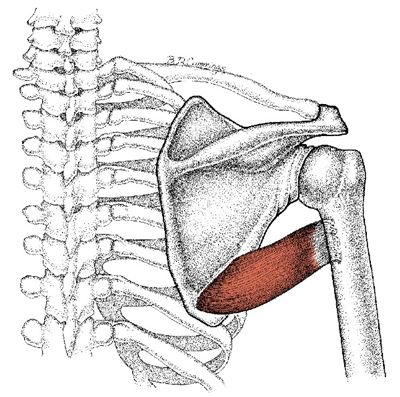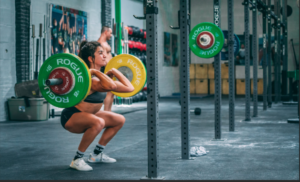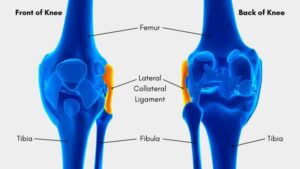Introduction
The teres major is a small yet significant muscle located in the upper back, playing a crucial role in shoulder movement and stability. Strengthening the teres major can enhance your overall shoulder health, improve athletic performance, and prevent injuries. This comprehensive guide will explore the best teres major exercises, helping you build a balanced and robust upper body.
What is the Teres Major?

The teres major is a thick, rounded muscle that lies beneath the shoulder joint and works in conjunction with the latissimus dorsi. It originates from the lower part of the scapula and attaches to the humerus. The primary functions of the teres major include:
- Internal Rotation: Rotating the arm towards the body.
- Adduction: Bringing the arm towards the centerline of the body.
- Extension: Moving the arm backward.
Strengthening the teres major is vital for activities that involve lifting, pulling, and overall upper body stability.
Anatomy of the Teres Major
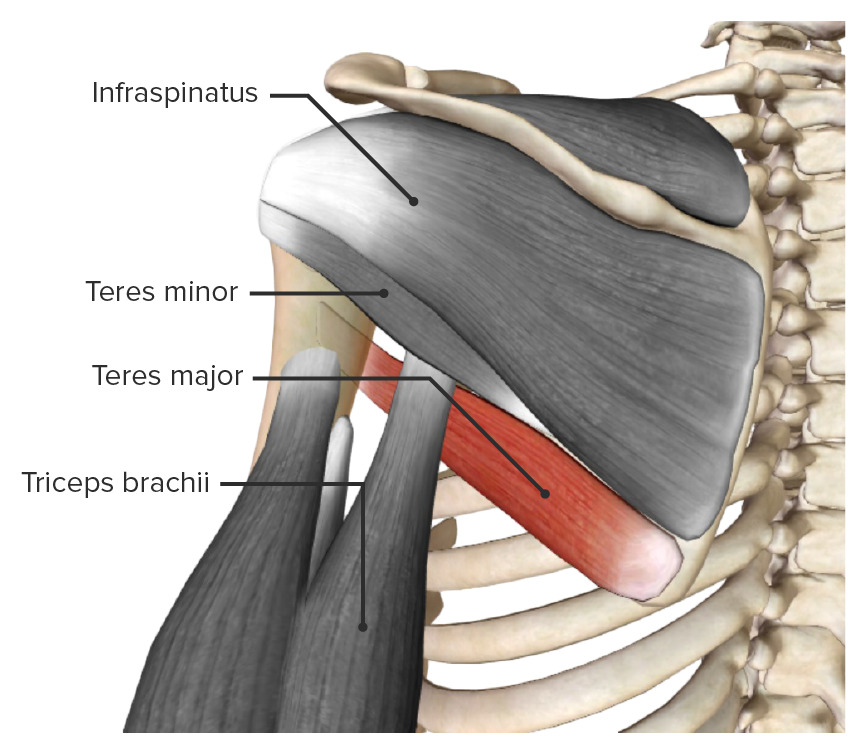
Understanding the anatomy of the teres major helps in targeting it effectively during workouts. The teres major is often referred to as the “little lat” because it works synergistically with the latissimus dorsi. Here’s a closer look at its anatomical features:
- Origin: The muscle originates from the lower third of the lateral border of the scapula.
- Insertion: It inserts into the medial lip of the intertubercular sulcus of the humerus.
- Innervation: The teres major is innervated by the lower subscapular nerve (C5 and C6).
- Function: It primarily assists in the internal rotation, adduction, and extension of the humerus.
Benefits of Strengthening the Teres Major
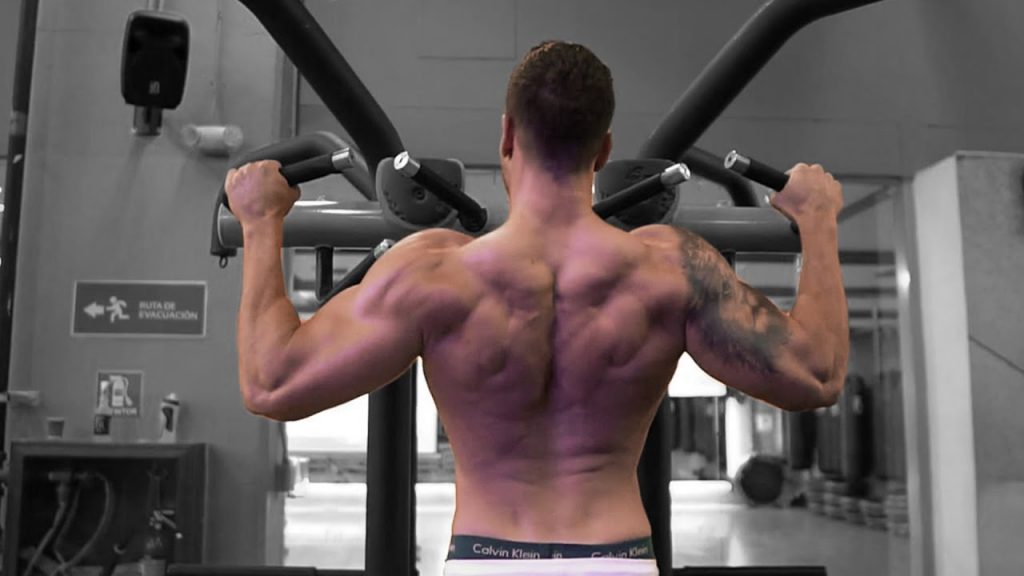
- Improved Shoulder Stability: A strong teres major contributes to a stable shoulder joint, reducing the risk of dislocations and injuries.
- Enhanced Athletic Performance: Athletes involved in sports like swimming, tennis, and baseball can benefit from improved shoulder strength and range of motion.
- Better Posture: Strengthening the upper back muscles, including the teres major, helps in maintaining proper posture and preventing rounded shoulders.
- Balanced Muscle Development: Targeting the teres major ensures a well-rounded upper body workout, preventing muscle imbalances.
- Injury Prevention: A well-conditioned teres major can help prevent common shoulder injuries, such as rotator cuff tears and impingements.
Top Teres Major Exercises
To effectively target and strengthen the teres major, incorporate the following exercises into your routine:
Teres Major Exercises #1. Single-Arm Dumbbell Row
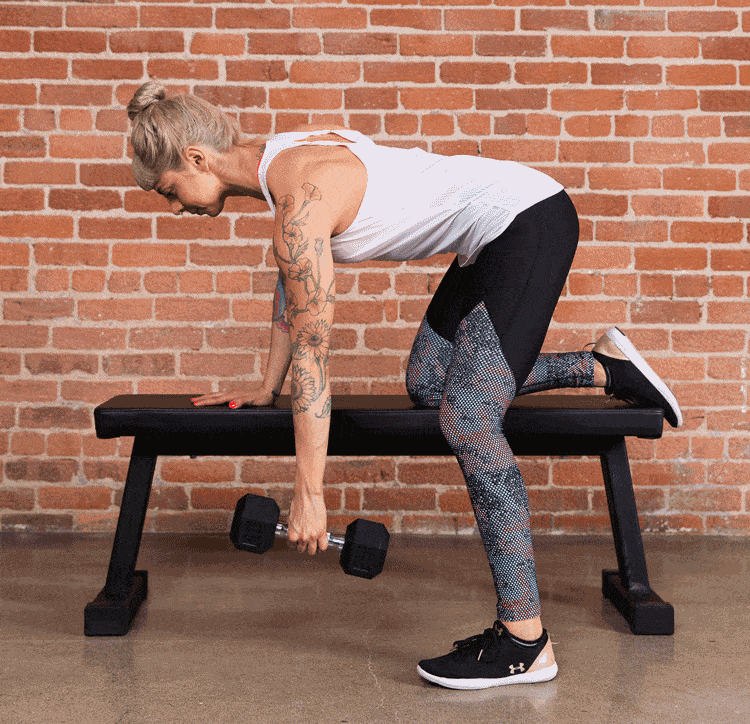
How to Perform:
- Place your left knee and hand on a bench, keeping your back flat.
- Hold a dumbbell in your right hand with your arm extended towards the floor.
- Pull the dumbbell towards your hip, keeping your elbow close to your body.
- Squeeze your shoulder blade at the top of the movement.
- Lower the dumbbell back to the starting position.
- Repeat for the desired number of reps and switch sides.
Tips:
- Focus on using your back muscles rather than your biceps.
- Maintain a neutral spine throughout the exercise.
Teres Major Exercises #2. Lat Pulldown
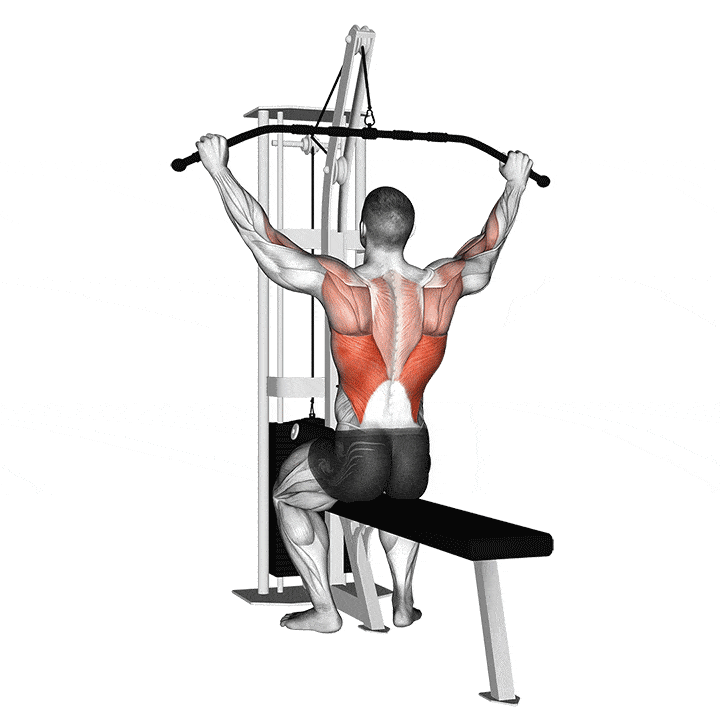
How to Perform:
- Sit at a lat pulldown machine and grab the bar with an overhand grip, slightly wider than shoulder-width.
- Lean back slightly and pull the bar down towards your chest.
- Squeeze your shoulder blades together at the bottom of the movement.
- Slowly return the bar to the starting position.
Tips:
- Avoid using momentum to pull the bar down.
- Keep your elbows pointed straight down.
Teres Major Exercises #3. Pull-Ups

How to Perform:
- Grab a pull-up bar with an overhand grip, hands shoulder-width apart.
- Hang with your arms fully extended.
- Pull your body up until your chin is above the bar.
- Lower yourself back to the starting position in a controlled manner.
Tips:
- Engage your core to prevent swinging.
- Focus on squeezing your back muscles as you pull up.
Teres Major Exercises #4. Straight-Arm Pulldown
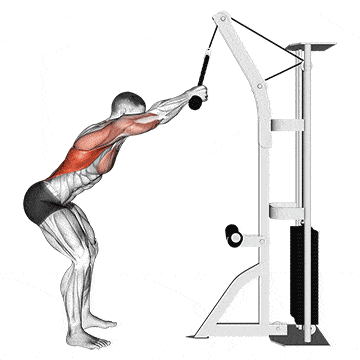
How to Perform:
- Attach a straight bar to a high pulley.
- Stand facing the machine with your feet shoulder-width apart.
- Grab the bar with an overhand grip, arms fully extended.
- Pull the bar down towards your thighs while keeping your arms straight.
- Squeeze your shoulder blades together at the bottom of the movement.
- Slowly return to the starting position.
Tips:
- Keep your back straight and avoid leaning forward.
- Focus on using your lats and teres major.
Teres Major Exercises #5. Face Pulls

How to Perform:
- Attach a rope to a high pulley.
- Stand facing the machine and grab the rope with both hands, palms facing each other.
- Pull the rope towards your face, flaring your elbows out.
- Squeeze your shoulder blades together at the end of the movement.
- Slowly return to the starting position.
Tips:
- Maintain a slight bend in your knees for stability.
- Keep your movements controlled and avoid jerking the rope.
Teres Major Exercises #6. Dumbbell Pullovers
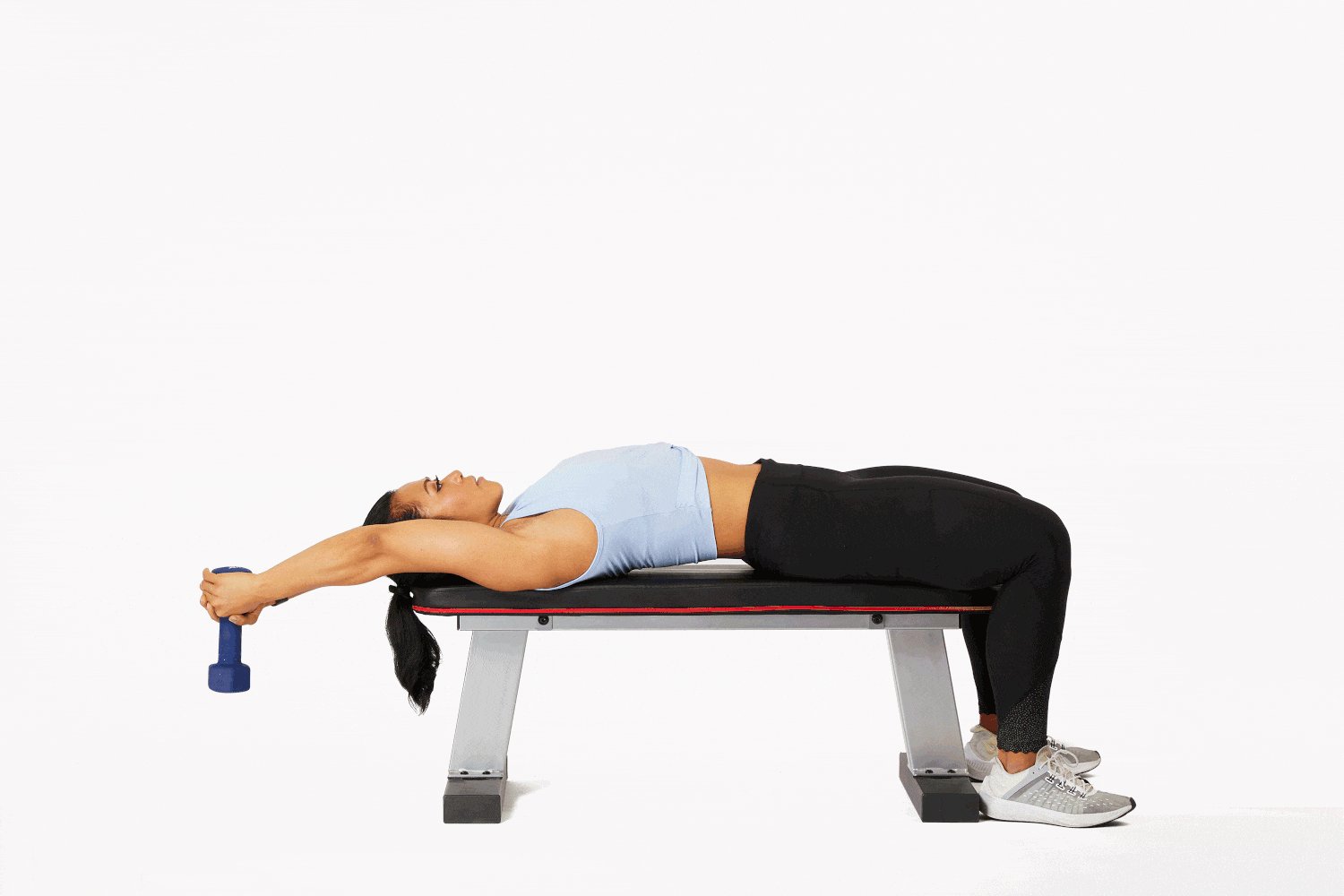
How to Perform:
- Lie on a bench with your head and upper back supported.
- Hold a dumbbell with both hands, arms extended above your chest.
- Lower the dumbbell in an arc behind your head while keeping your arms slightly bent.
- Pull the dumbbell back to the starting position using your back muscles.
Tips:
- Keep your core engaged to prevent your lower back from arching.
- Focus on a slow and controlled motion.
Teres Major Exercises #7. Bent-Over Rows

How to Perform:
- Stand with your feet shoulder-width apart, holding a barbell with an overhand grip.
- Bend at the hips and knees, keeping your back straight.
- Pull the barbell towards your lower rib cage, squeezing your shoulder blades together.
- Lower the barbell back to the starting position.
Tips:
- Avoid rounding your back.
- Keep your elbows close to your body.
Common Mistakes to Avoid
- Using Momentum: Relying on momentum rather than muscle strength can reduce the effectiveness of the exercises and increase the risk of injury. Focus on controlled, deliberate movements.
- Neglecting Form: Proper form is crucial for targeting the teres major effectively and preventing strain on other muscles or joints. If you’re unsure about your form, consider working with a trainer.
- Overtraining: While it’s essential to strengthen the teres major, overtraining can lead to muscle fatigue and injury. Ensure you incorporate adequate rest and recovery into your routine.
- Neglecting Other Muscles: Focusing solely on the teres major can lead to imbalances. Ensure your workout routine includes exercises for all major muscle groups.
Incorporating Teres Major Exercises into Your Routine

To achieve the best results, integrate teres major exercises into your upper body or back workout sessions. Here’s a sample workout plan:
Warm-Up: 5-10 minutes of light cardio (e.g., jogging, jumping jacks) and dynamic stretching focusing on the upper body.
Workout:
- Single-Arm Dumbbell Row: 3 sets of 10-12 reps per arm.
- Lat Pulldown: 3 sets of 10-12 reps.
- Pull-Ups: 3 sets of as many reps as possible.
- Straight-Arm Pulldown: 3 sets of 12-15 reps.
- Face Pulls: 3 sets of 12-15 reps.
- Dumbbell Pullovers: 3 sets of 12 reps.
- Bent-Over Rows: 3 sets of 10 reps.
Cool-Down: 5-10 minutes of static stretching, focusing on the upper back and shoulders.
Variations and Progressions
To keep your workouts challenging and avoid plateaus, try incorporating variations and progressions of teres major exercises:
Variations
- Single-Arm Lat Pulldown: Perform the lat pulldown one arm at a time to increase the demand on the teres major and improve unilateral strength.
- TRX Rows: Use TRX suspension trainers for rows to engage stabilizer muscles and add an element of instability.
- Kettlebell Pullovers: Use a kettlebell instead of a dumbbell for pullovers to change the grip and muscle activation.
Progressions
- Increased Weight: Gradually increase the weight you use for each exercise to continue challenging your muscles.
- Slower Tempo: Slow down the tempo of each rep to increase time under tension and enhance muscle activation.
- Higher Reps: Occasionally increase the number of reps per set to build muscular endurance.
Case Study: Improving Athletic Performance with Teres Major Exercises
Athletes can significantly benefit from a strong and functional teres major. Here’s a case study to illustrate the impact:
Athlete Profile:
- Name: John
- Sport: Baseball
- Goal: Improve throwing power and shoulder stability.
Training Plan: John’s coach incorporated teres major exercises into his strength training routine, focusing on improving shoulder stability and power. The exercises included single-arm dumbbell rows, lat pulldowns, and face pulls. Over 12 weeks, John performed these exercises twice a week, progressively increasing the weight and intensity.
Results:
- Throwing Power: John reported a noticeable increase in his throwing power, with faster and more accurate throws.
- Shoulder Stability: He experienced improved shoulder stability, reducing discomfort during games.
- Injury Prevention: John remained injury-free throughout the season, attributing it to the strengthened teres major and overall shoulder complex.
Expert Tips for Maximizing Results
- Progressive Overload: Gradually increase the weight or resistance you use for teres major exercises to continue challenging your muscles and promoting growth.
- Mind-Muscle Connection: Focus on the target muscle during each exercise to enhance activation and effectiveness.
- Balanced Training: Incorporate exercises that target other upper body muscles to ensure balanced development and prevent imbalances.
- Regular Assessment: Periodically assess your strength and adjust your training plan to ensure continued progress.
- Recovery: Allow adequate time for rest and recovery, incorporating stretching and mobility exercises to maintain muscle flexibility and joint health.
Conclusion
Strengthening the teres major is vital for maintaining shoulder health, improving athletic performance, and achieving a balanced upper body. By incorporating the exercises outlined in this guide into your routine, you can effectively target this crucial muscle and enjoy the benefits of a strong, stable upper back. Remember to prioritize proper form, progressive overload, and balanced training for optimal results.
FAQs
- Can beginners perform teres major exercises?
- Yes, beginners can perform these exercises with proper guidance and lighter weights. Focus on mastering form before increasing resistance.
- How often should I train the teres major?
- Aim to incorporate teres major exercises into your routine 2-3 times per week, ensuring adequate rest between sessions.
- Can I perform these exercises at home?
- Yes, many teres major exercises can be performed at home with minimal equipment, such as dumbbells, resistance bands, or a pull-up bar.
- What are some signs of overtraining the teres major?
- Symptoms of overtraining include persistent muscle soreness, decreased performance, and increased risk of injury. Ensure you allow for proper rest and recovery.
- Can these exercises help with shoulder pain?
- Strengthening the teres major can improve shoulder stability and reduce the risk of pain. However, if you experience persistent shoulder pain, consult a healthcare professional

